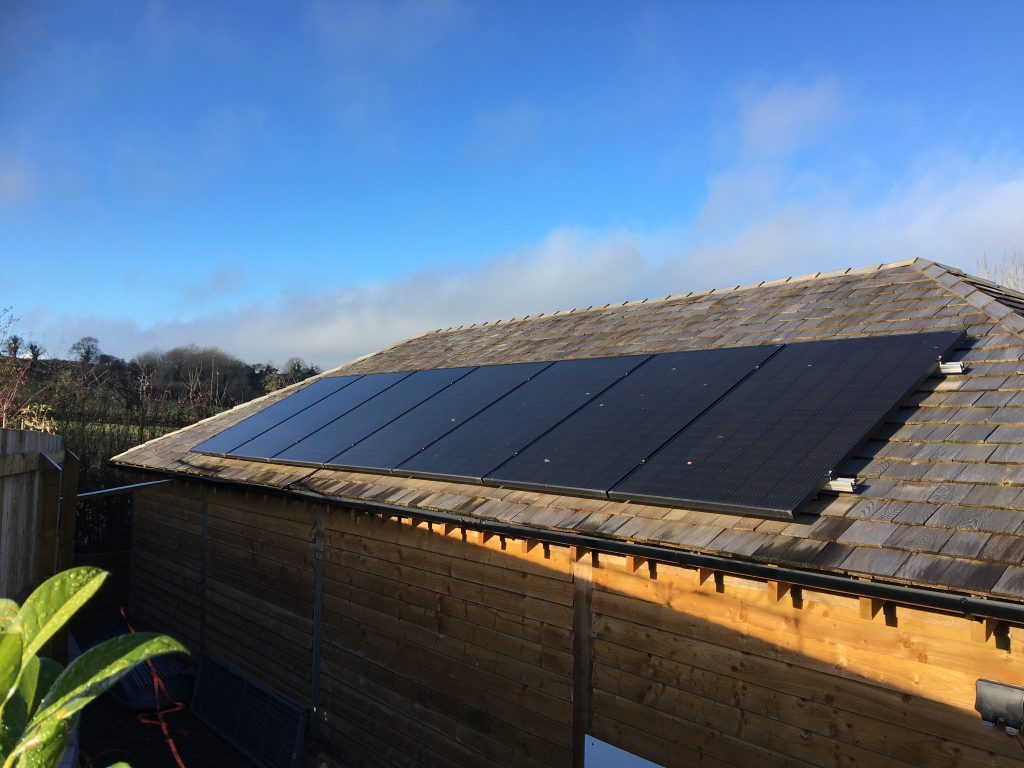I invested in solar this year, along with a battery, a replacement EV, and an EV charger intelligent enough to know when to charge from solar and when to wait for the cheaper night rate. My electricity supplier also uses 100% non-fossil fuel renewable energy.
This means the office heat and light, plus my transport is as green as I can get it. A decision driven by my values, rather than electricity costs. Doing the right thing.
One of the key tools in the battle to reduce our carbon emissions and limit climate change (as well as our fuel bills) is improving the heat efficiency of our homes.
The United Nations Paris Agreement, which attempts to keep global warming within a liveable threshold, includes a target that every building on the planet must be net-zero-carbon by 2050. That’s quite a challenge. According to a survey by the U.S. Environmental Protection Agency (EPA), people in North America and Europe spend up to 90% of their time inside some type of structure. The buildings sector emits 39% of global CO2 emissions.
Here in the UK, our official Climate Change Committee has stated that reducing energy demand in buildings is “the biggest gap in current government energy policy”. Latterly, there has been some resource committed to tackling this problem with the government allocating £1m to its ECO+ Home Energy Efficiency scheme. This can be used to instal insulation, heat pumps, and solar panels.
However, sometimes money alone is not enough to immediately solve the problem. A BBC local news report recently disclosed how funding had to be returned to the government because a Local Enterprise Hub in the South-East could not find enough skilled tradespeople to install the home improvements.
Colleges are stepping up to the plate and are now redesigning courses to include more energy efficiency and retro-fit skills. According to the Energy Systems Catapult, upgrading 10 million homes to net zero across the South-East alone will need 46,500 full time workers. Furthermore, as workers will not necessarily work full-time on new installations, the total workforce trained in retro-fitting needs to be 100,000 and up to 200,000 at peak times.
Owen Morgan, who runs solar panel installer Cambridge Solar, said in the 13 years since his business began, demand has never been so high. New customers will be waiting around six months before panels can be fitted. The industry is experiencing delays sourcing some components, including batteries and panels, as well as securing staff. I waited 7 months for the solar battery due to a parts shortage in the supply chain.
It’s very positive to hear the appetite and demand for home-based green initiatives and of course the opportunity for job creation this brings. Achieving net-zero requires mass involvement, everyone involved from the ground up and appropriate messaging being sung from the rooftops. We can’t however make all the practical changes we need to overnight, no matter how serious the climate challenge.
Although greening homes takes time, greening your finances can be achieved much more quickly. It wouldn’t need many sleeps at all to direct your investments into funds better aligned with the United Nations Sustainable Development Goals. Funds that invest directly or indirectly into heat efficiency and other positive housing initiatives – from improving the clean energy network to manufacturing insulation materials and funding new social housing projects.
Driven by my values, the work I do with my clients helps them green their finances and make a positive contribution to sustainability. Not just a warm feeling inside, but investing in long-term wealth goals.
*Please note that capital is at risk and these investments are designed for the long term.
Net zero homes need £150bn and workforce of 46,000 – BBC News
New homes to produce nearly a third less carbon – GOV.UK (www.gov.uk)
How much are our buildings contributing to GHG emissions? | LinkedIn




